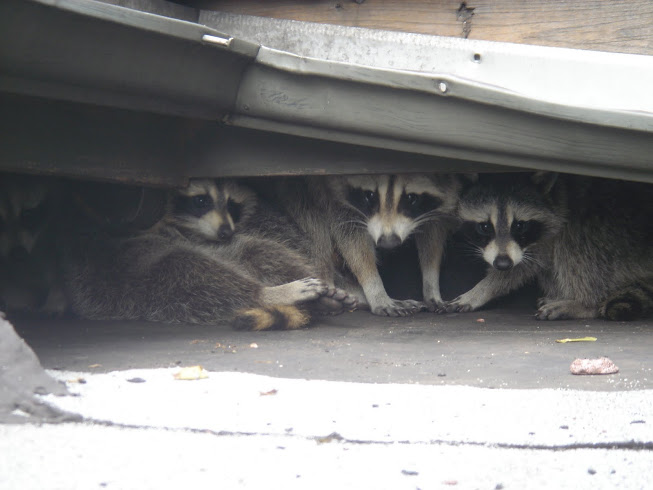Once recognized as the sole “Automotive Capital of Canada,” Oshawa today is an education and health sciences hub. But don’t let that fool you into thinking there is no green space left in the city. Oshawa’s parks and trail system encompasses almost 410 hectares of parkland and more than 27 kilometres of paved trails. The McLaughlin Bay Wildlife Reserve and Second Marsh Wildlife Area offer protected marshland areas with interpretive trails and viewing platforms. Because of this, Oshawa has a diverse ecosystem. From snakes to rabbits, and foxes, the list of wildlife species that call this region home is seemingly endless.
One such species is raccoons and they can be challenging to deal with due to their intelligence, resourcefulness and sheer numbers. Encounters are bound to happen, and when they do, keep in mind that the right way to react would be to get in touch with a professional animal control service provider.
Raccoons 101
Measuring 83 to 114 cm long and with 7 to 20 lbs of weight, the raccoon is a mid-sized mammal easily identifiable by its mask-like furry face and head. Each foot has five fingers and toes and its dexterous hands allow it to access the contents of almost everything including jars with tight lids. Coupled with small, rounded ears and short legs, its body is characterized by black bands on its tail, which is very bushy. A raccoon’s fur is medium-length and very coarse.
What Makes Them So Troublesome As Invaders?
Surely the most problematic thing about raccoons from a homeowner’s standpoint is their intelligence and curiousness. While it’s understandable that these are the very characteristics that allow them to survive in the wild, at the same time, they also make these animals particularly difficult to get rid of from one’s property permanently. Once they take up residence in buildings or an attic, they can be tricky to remove and very destructive as well. Despite predation by coyotes and humans, and also diseases like rabies and malnutrition, raccoon populations are not in decline in the majority of areas of Ontario, Oshawa included.
Raccoon Habits
The most prevalent characteristic about raccoons is that they are almost exclusively nocturnal. Daytime is usually spent sleeping in dens; while they may sleep for an extended period during cold winters, they do not hibernate. At the same time, they are usually solitary animals that only spend time with other members of their species during the breeding season. Thanks to their acute sense of hearing and excellent night vision, coupled with the fact that they are strong swimmers and agile climbers, raccoons are capable of sourcing food and easily adaptable to new surroundings. Feeling stream bottoms for food, opening garbage cans and containers, as well as climbing trees to pick fruit are all easily done thanks to their nimble fingers. Combined with their innate intelligence, they also have no trouble finding their way into a house to get food. They are scavengers and will usually feed on human garbage, bird eggs, frogs, small rodents, fish, aquatic invertebrates, insects, nuts and fruits.
What To Do If You Encounter Them In Your Residence Or Property
The most important thing to keep in mind when it comes to raccoons is, no matter how cute or cuddly they look, raccoons are still wild animals. Like all wild animals, they can be dangerous, especially when backed into a corner or worse – if their den is discovered while a mother is inside with her kits. That is why finding even the faintest trace of raccoons on your property should warrant an immediate phone call to a professional Oshawa animal control provider. If you’re unsure about which company to reach out to, simply go with Skedaddle Humane Wildlife Control.
Why? Because Skedaddle has been in business for nearly 30 years and has developed a number of humane removal methods and techniques during that time. Skedaddle also practices hands-on removal techniques whenever babies or kits are found in a client’s homes and will make sure to reunite the babies with their mothers in special reunion boxes after removal so that the mothers can relocate their babies to other denning sites safely.
Skedaddle also performs cleaning and sanitization services after removal, in addition to re-insulation and future-proofing your residence against re-entry. Skedaddle Humane Wildlife Control is your one-stop-shop for all wildlife-related problems, so get in touch with us today and ensure the safety of both your home and the invading wildlife.



